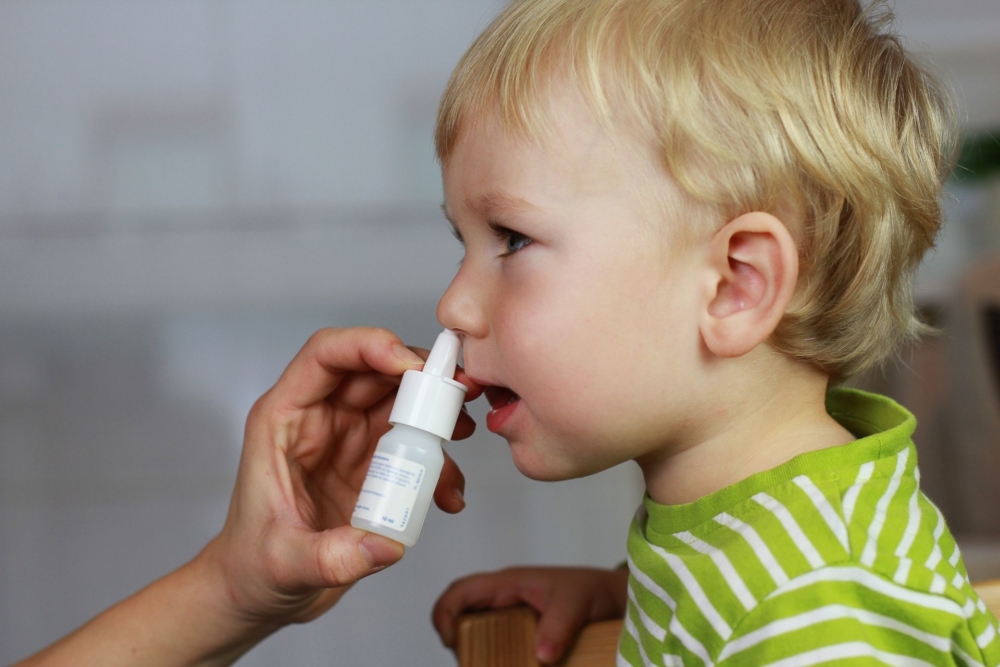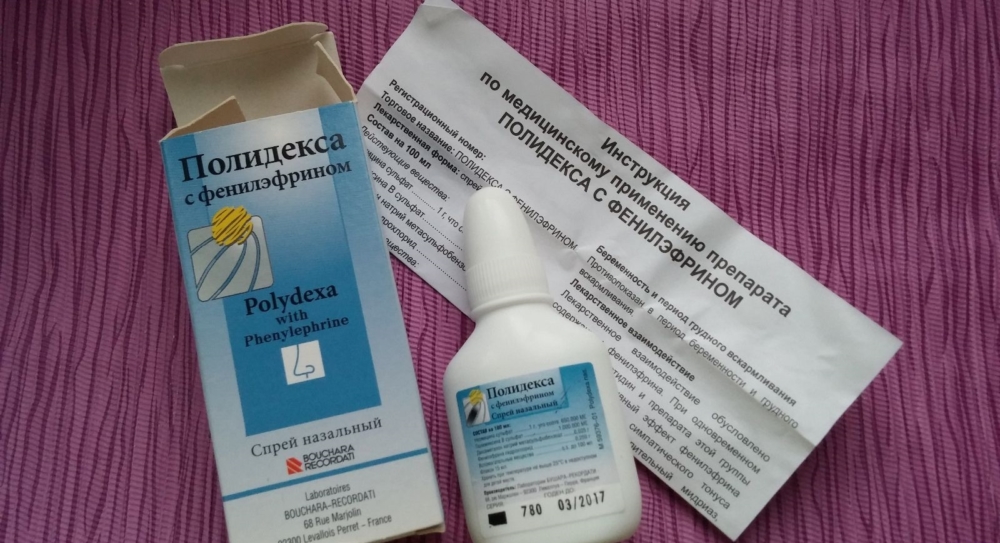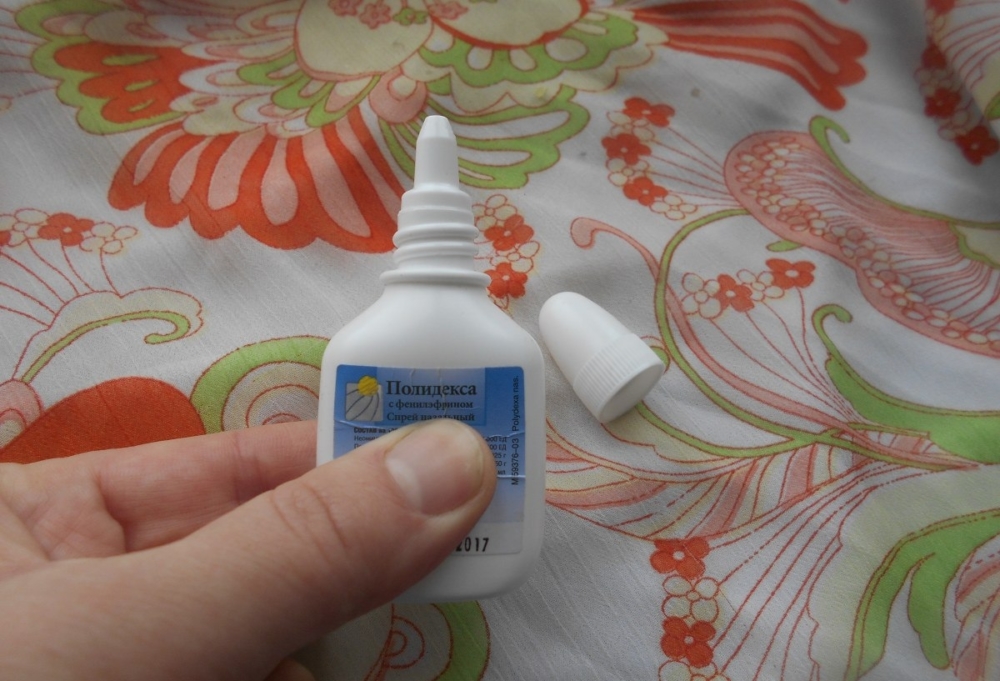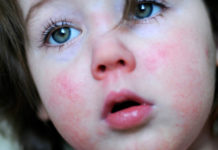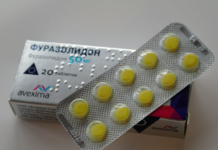Children often suffer from various types of rhinitis. If the pathology takes on a serious nature, it is worth connecting powerful combination drugs. Polydex has instructions for children and adults, which indicate the approximate dosage of the drug, based on the patient's age.
Material Content:
Composition of nasal spray and ear drops
Polydex nasal spray contains several active ingredients. Among them are synthetic glucocorticoid metasulfobenzoate sodium dexamethasone (2.6 mg) and two sulfate antibiotics: polymyxin B (1,000,000 units) and neomycin (650,000 units) in 100 ml of solution. The medicine has no color. The bottle is available in a volume of 15 ml and has a nozzle-shaped tip.
Polydex with phenylephrine is also available as a nasal spray. 100 ml of the solution contains dexamethasone sodium metasulfobenzoate (2.5 mg), polymyxin B sulfates (1 million units) and neomycin (650 tons), as well as phenylephrine hydrochloride (25 mg). The medicine refers to complex agents that have antibacterial, α-adrenostimulating and glucocorticosteroid effects.
Polydex ear drops differ in composition from the nasal spray. They include 10 mg of dexamethasone in the form of sodium methyl sulfobenzoate, polymyxin B sulfates (1 million units) and neomycin (650 t. Units). The medicine is packaged in darkened glass bottles with a volume of 10.5 ml. The package contains a bottle and a pipette for the dosage of the drug.
The medicine helps to relieve inflammation due to GCS in the composition, and also to destroy its cause, if it is of a bacterial nature, due to antibiotics. It is active against Escherichia coli, pseudomonas aeroginos species, Haemophilus influenzae, pneumonia Klebsiella and Staphylococcus aureus. Phenylephrine spray also helps ease breathing by quickly relieving swelling.
The drug is used topically. It is practically not absorbed into the blood, therefore it is safe for children. A negative effect is noted only when the recommended dosage or the duration of treatment is repeatedly exceeded.
Why is Polydex prescribed to a child?
In the form of a nasal spray, Polydex is prescribed for various pathologies of the nasal cavity. Among them are most often distinguished:
- sinusitis;
- rhinitis of acute and chronic course;
- rhinopharyngitis of any nature.
Antibiotic ear drops are prescribed for hearing organ infections. These conditions include:
- eczema localized in the ear canal and complicated by infection;
- otitis media of the middle and outer ear in the absence of pathology of the eardrum.
The drug with phenylephrine helps relieve swelling and nasal congestion. It is prescribed in several cases:
- with rhinopharyngitis;
- with pathologies of an infectious and inflammatory nature, localized in the paranasal sinuses or nasal cavity or in the pharynx;
- during sinusitis;
- during periods of rhinitis of a chronic or acute nature.
In the presence of one of the indications, Polydex is considered the drug of choice for the patient. The question of his appointment is decided by the doctor after a full-time consultation and examination. In this case, the existing disease, age, general condition and effectiveness of previous therapy are taken into account.
At what age can I use
Antibiotic nasal spray can be prescribed for children no younger than 2.5 years old. Ear drops are allowed from the same age. This is due to the large number of active components in the drug and its high therapeutic activity.
Instructions for use for children
The instructions for use indicate approximate dosages of the drug for children. From 2.5 to 18 years, a nasal spray is administered 1 press 3 times a day in each nasal passage. The course of therapy is from 5 to 10 days.
Attention! If the child is older than 15 years, and the disease is severe, the frequency of use of the drug can increase up to 5 times a day.
Ear drops are used 2 times a day, 1-2 drops in the ear on each side. Treatment lasts from 6 to 10 days. It is recommended to warm the solution to a comfortable temperature before use, so as not to provoke discomfort.
Interaction with other medicines
Only Polydex with phenylephrine can interact with other groups of drugs. It reduces the severity of the hypotensive effect of diuretics, mecamylamine, guanethidine, methyldopa and guanadrenal. The drug does not affect the activity of other drugs.
Contraindications and side effects
Despite the absence of a pronounced systemic effect, the drug has a contraindication. These include:
- diseases of viral etiology;
- age younger than 2.5 years;
- the possibility of developing angle-closure glaucoma;
- the period of bearing a child;
- use of monoamine oxidase during treatment;
- pathology of the excretory system of a severe degree with symptoms of protein excretion in the urine;
- hyperreactivity to substances in the composition of the product.
If the patient has one of these conditions, he is assigned Polydex analogues for pathologies of ENT organs. But even those who are suitable for the drug may develop side effects. They appear:
- allergies of limited localization;
- dry nasal mucosa.
If the dosage of the medicine is repeatedly exceeded or the treatment time is extended, tremor of the extremities, hypertension, pain in the head area, increased heart rate, sleep disturbances, as well as erythema or blanching of the skin can be observed.If unpleasant symptoms appear, Polydexa therapy should be discontinued. Instead, they pick up a new medicine with similar properties.
Similar topical preparations
Polydex has a unique composition and properties. Most of its analogues, Maxitrol resembles it. It is available in the form of drops, and in the composition has polymyxin and neomycin. The most common vials with a volume of 5 ml. The price of a medicine significantly exceeds that of the original drug, and dexamethasone is absent in the drug itself, so the severity of the effect is lower.
Between Isofra and Polydexa often choose exactly the analogue. This is due to the wider area of exposure of framycetin - an antibiotic in its composition. But at the same time, it does not contain a glucocorticoid component, so the anti-inflammatory effect is less pronounced.
As an analogue of ear drops, Garazon can be used. It contains gentamicin in the form of sulfate and betamethasone sodium phosphate as active ingredients. The combination of antibiotic and glucocorticosteroid suggests a similar effect between the two drugs, but due to differences in composition, the indications and dosage of the drugs are different.
Sofradex can replace the nasal form of Polydex. He has antibacterial and anti-inflammatory effects, as well as an anti-allergic effect. Medications differ in dosage and purpose.
Polydex does not have a complete structural analogue in the pharmaceutical market. But some drugs can replace some of its forms. In this case, it is worth considering the possible differences in dosage and contraindications.
The medicine is approved for use in young children. But during therapy, it is worthwhile to be observed at the ENT for dosage adjustment. If unpleasant symptoms occur, consult a specialist for medical help.



